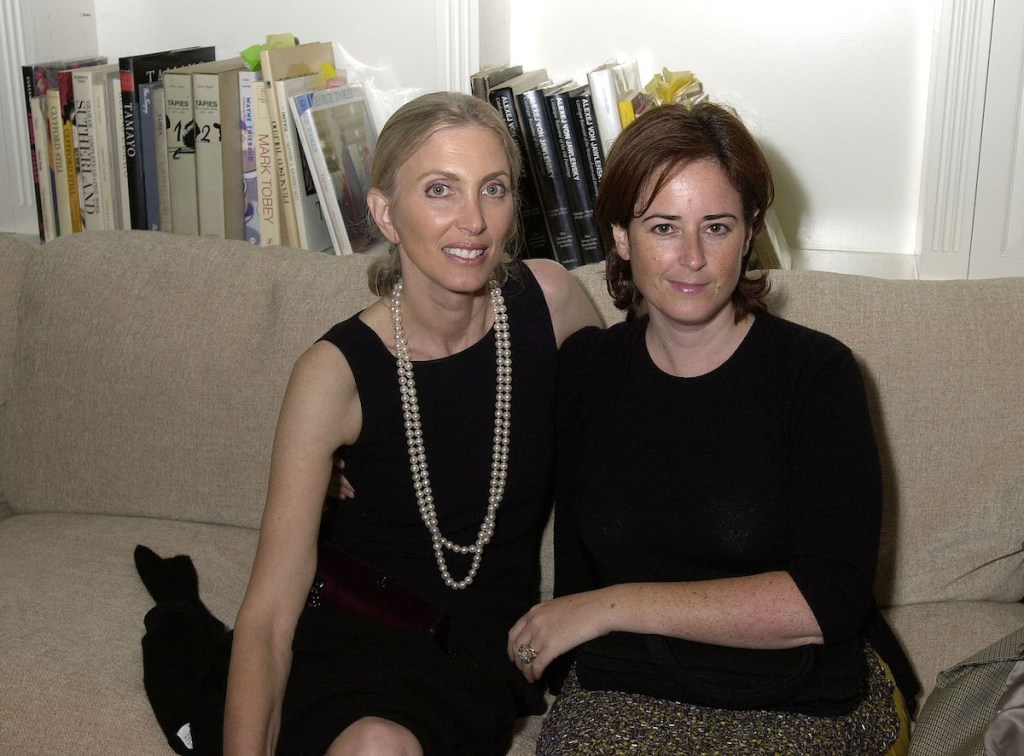While much of the art world is off on summer holidays, news broke earlier this week of a bitter legal battle between top art advisor Barbara Guggenheim and her former partner Abigail Asher.
The implosion of the advisors’ high-profile partnership, Guggenheim Asher Associates (GAA), has sent waves through an industry already reeling from dealer Tim Blum’s announcement earlier this month that he was shuttering his eponymous gallery.
In a widely shared post on LinkedIn, collector Sylvain Levy put the news in stark terms.
Related Articles

“The collapse of Guggenheim Asher Associates, once a pillar of the international art advisory landscape, is more than a private dispute between two prominent figures,” Levy wrote. “It is a public moment of reckoning for an industry that has long operated on trust, discretion, and informality at the highest levels.”
The dispute, Levy continued, reveals a “systemic failure in governance” in the art world, and in particular in the advisory profession, which “remains one of the least regulated within the global cultural economy … governed less by codified standards than by networks of reputation.”
The legal battle began last August, when Guggenheim accused Asher of misusing firm funds and staking a claim to up to $20.5 million in future commissions from clients who follow her after the the two parted ways, despite no non-compete clause and a business that had already dissolved. According to court filings, Asher is accused of using the money for everything from home improvements to meals and European health club retreats.
While Asher initially sought to have the suit dismissed, earlier this week she countersued, alleging that her former partner “stole money from the firm to pay personal expenses, including her husband’s funeral costs, luxury vehicles, and family vacations.” Asher also claims that Guggenheim chronically bullied her, threatened her, and instructed her to “wear leather and be provocative”—and even to sleep with clients to drum up business.
Particularly disturbing is the allegation that Guggenheim encouraged Asher to build a relationship with Jeffrey Epstein, a friend of Guggenheim’s who—years after the events outlined in Asher’s suit—was convicted of sexual offenses against minors, in order to build a portfolio of well-heeled clients.
Guggenheim has faced similar allegations in the past. In 1989, actor Sylvester Stallone filed a $5 million civil fraud suit alleging that the advisor pressured him into buying damaged works and ultimately overcharged him. That case was settled out of court.
Part of GAA’s pristine reputation stemmed from the fact that both women were executive members of the Association of Professional Art Advisors (APAA), an invitation-only membership organization that promotes “standards of connoisseurship, scholarship, and ethical practice in the profession,” and whose members “are distinguished by adherence to a core set of ethical principles.”
But art advisor Maria Brito, who is not affiliated with the APAA, said there’s only so much such an organization can do.
“Not even a regulatory body can prevent advisors from committing fraud, from breaking ethical rules, or committing tax fraud,” Brito told ARTnews. “The biggest problem isn’t their reputations; it’s the possibility that one or both broke state or federal laws or defrauded the IRS.”
Earlier this year, once-prominent art advisor Lisa Schiff was sentenced to 2.5 years in prison after pleading guilty to orchestrating a Ponzi-esque scheme that drained more than $6.4 million from friends and clients. While Schiff was not a member of the APAA, she built her career during the art market’s rise in the early aughts. In 2000, when she opened her advisory, the APAA had only 60 members. Today, that number has grown to 185—while countless other advisors remain outside the organization.
In 2023, when news of Schiff’s misconduct became public, APAA president Alex Glauber told Town & Country that the organization’s membership standards are “designed to counter the realities of a field with no barriers to entry. Collectively, these standards aim to define advisory best practices within an amorphous field often impugned by those unqualified at best and deceitful at worst.”
When approached for comment about the Guggenheim–Asher lawsuits, a spokesperson for the APAA told ARTnews: “Like everyone, we still have more to learn and are not in a position to assess the allegations. We won’t be able to provide a comment at this time.”
It’s no surprise that, following such a high-profile legal dispute, the industry in question is facing more scrutiny, according to Megan Fox Kelly, an APAA member and former president.
“Any time a partnership like this, after decades of prominence, dissolves through litigation, it attracts attention and raises questions about the structure of the business and its governance,” Fox Kelly told ARTnews. “Both advisors have strong reputations and long track records. And I would hope there’s still a path forward for them, whether together or independently.”
In 2024, just two months before Guggenheim filed her suit, Cultured reported that Asher had parted ways with GAA, where she advised major corporate clients like Sony and A-listers including Tom Cruise. With litigation ongoing, it remains unclear what effect—if any—the public and messy dissolution of such a prominent partnership will have on the advisory business as a whole.
“Whenever we see this type of fraud I think it should give people pause,” advisor Ralph DeLuca told ARTnews. “My advice, if you want to work with an advisor, do your homework. Ask art dealers and auction houses. Observe how they live. If they aren’t responsible with their money, what do you think they’ll do with yours?”

